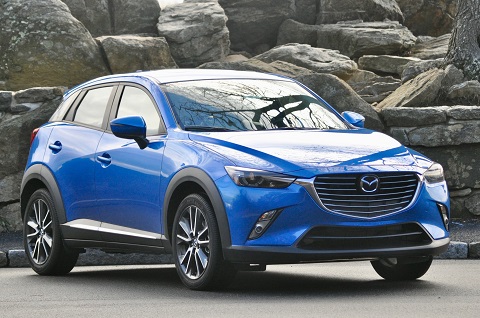
It’s common knowledge that all cars, trucks, and SUVs have four wheels, but not everyone realizes those four wheels don’t always work the same way on all vehicles. For example, some cars are two-wheel drive (2WD), and others are four-wheel drive (4WD). In addition, all-wheel-drive (AWD) vehicles are becoming more common. With all of these different terms floating around, it’s easy to see why it would be challenging to know which to choose when shopping for a car.
So, what exactly are these terms referring to when you’re reading a vehicle’s description? And what are the main differences between 2WD, 4WD, and AWD? We will do our best to answer these questions today so you can select the best option for your situation. Read below to discover what you need to know about 2WD, 4WD, and AWD.
What Is 2WD?

To put it simply, a 2WD car is precisely what it sounds like — only two of the wheels actually receive power. They are all turning, but two will more or less just be along for the ride. And, of course, four wheels on the ground are much more stable and functional than three. For a long time, most of the cars, trucks, and SUVs out on the road were 2WD vehicles, and even today, most come standard with 2WD.
That being said, not all 2WD vehicles are created equal. Which two wheels receive the power — either front-wheel drive (FWD) or rear-wheel drive (RWD) — varies by what the manufacturer intended for that car to do. FWD vehicles let the front wheels handle all the steering and accelerating. Most 2WD vehicles released today are FWD, as these are typically more fuel-efficient than RWD vehicles. There is less wasted energy since the engine and drive wheels are close to each other. In addition, the weight of the engine pressing down on the front wheels helps with traction, especially on slippery surfaces.
Don’t write off RWD vehicles entirely, though. There are still plenty of RWD vehicles produced today, namely high-end or sporty cars, pickup trucks, and off-road-focused SUVs. Power sent solely to the rear wheels results in smooth, balanced handling, making them more fun to drive. And today’s RWD cars are better in inclement weather than ever before due to advancements in traction-control systems and vast improvements in tire technology.
If you live in a region where you typically experience rain or light snow, a 2WD vehicle will do the job just fine. The FWD setup often suits most people best, but if an off-road SUV or a performance car is what you’re after, RWD will be your best bet.
What Is 4WD?
Most of the cars, trucks, and SUVs on American roads today are 2WD vehicles. But some people believe 4WD is a necessary upgrade. So, what separates 4WD vehicles from 2WD cars? Well, for the most part, nothing, as most 4WD vehicles will actually spend most of their time in 2WD. Modern 4WD systems are either full-time, which means they stay engaged; automatic, where the car automatically switches between 2WD and 4WD; or part-time, which requires the driver to switch manually between 2WD and 4WD. So, unless you’re climbing boulders or tackling a steep gravel trail, your 4WD will remain disengaged.
The most significant advantage to having a 4WD vehicle is that the option is there when you need it. It sends power to all four wheels, giving your truck better traction when stuck in deep snow, maneuvering rocky terrain, or pulling a heavy load. Many people want a 4WD system for the reassurance that they can maneuver out of severe conditions. Still, it’s really only necessary for those who regularly go off-roading and encounter rugged terrain.
What Is AWD?
Far more common in vehicles today is an AWD system. Some people mistake 4WD for AWD and vice versa, assuming these are basically the same thing. But AWD vehicles are different in that they require no driver intervention, operating seamlessly and silently. AWD will send power to the front wheels more often than not, but this system can send power to the rear wheels as necessary. The appeal of AWD is its simplicity — there’s nothing you need to do but hit the road.
After hearing about this process, you might wonder why anyone would opt for a 4WD vehicle over one with AWD. But it’s worth noting that while AWD vehicles can be very convenient, they won’t be as good if you plan on using a pickup truck or SUV for towing or off-roading. So you’ll still want to stick with a 4WD setup in these instances.
What Do You Need?
Now that you know more about what sets 2WD, 4WD, and AWD vehicles apart, you might wonder which one you should buy. It’ll all depend on how you plan to utilize the next car you purchase. If you’re primarily going to use it for getting to and from work, 2WD might work just fine for you. But if you anticipate having to drive through difficult conditions at times, 4WD or AWD might be your best bet.
From there, you should weigh the pros and cons of 4WD and AWD vehicles. 4WD vehicles will work best if you want something you can drive off-road or over rough landscapes, while AWD is better suited to changeable or snowy road conditions. If you’d rather sit back and enjoy the ride, you can let an AWD vehicle handle the terrain, as it automatically selects whether 2WD or 4WD is best.
Contact Us To Have Your Vehicle Serviced
It doesn’t matter if you have a 2WD, 4WD, or AWD vehicle. Whatever the drive system, it’s essential that you schedule tire and wheel services regularly. Our friendly team here at Bountiful Mazda can set you up with the services you need anytime. We always provide genuine Mazda parts when making repairs to a Mazda vehicle. These parts are made to fit your Mazda perfectly and are guaranteed to perform with the same quality as when your car first drove off the lot. Our skilled technicians will ensure that your vehicle remains on the road for years to come.
Contact us today for more information or to schedule a service appointment.
Image by Carsfera | Licensed with CC BY 2.0


